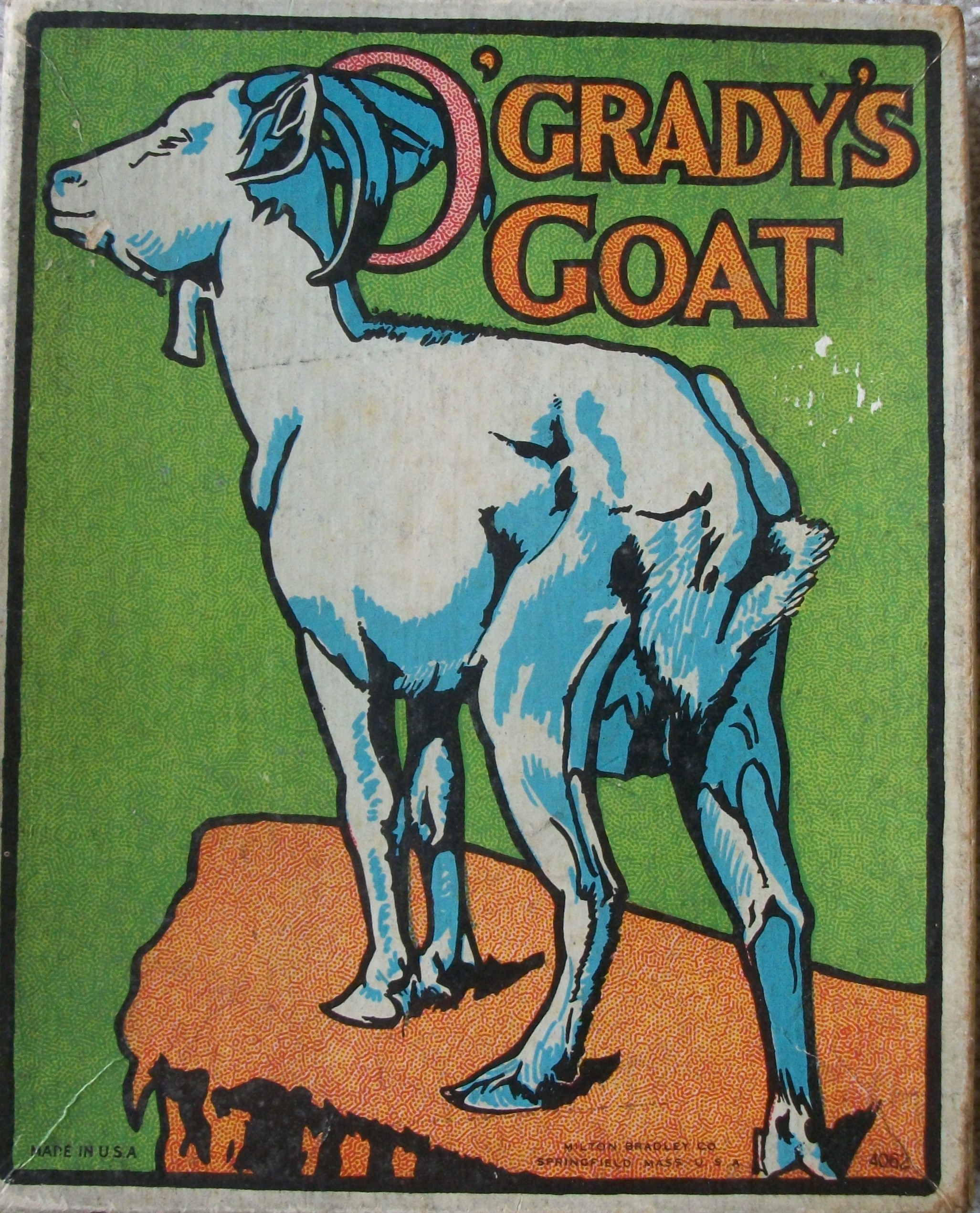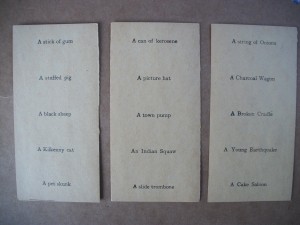 Everyone takes part in creating the amusing story told in the antique game of O’Grady’s Goat. Copyrighted in 1906 by Milton Bradley, O’Grady’s Goat is said to be a ‘jolly game’. And by the many laughs generated while playing, it surely is. All players enjoy adding their silly phrases to the tale being read.
Everyone takes part in creating the amusing story told in the antique game of O’Grady’s Goat. Copyrighted in 1906 by Milton Bradley, O’Grady’s Goat is said to be a ‘jolly game’. And by the many laughs generated while playing, it surely is. All players enjoy adding their silly phrases to the tale being read.
The game is simple to play. And even though there is not any players declared losers (or winner for that matter), the ending of the story does tell of ‘something’ that clearly lost. (shared below)
The game of O’Grady’s Goat consists of a small pamphlet that contains a story with blank lines left in the tale. Also in the box are numerous cards with five phrases written upon them.
Directions for how to play the game are given in one paragraph. This short amount of instruction makes evident the game’s straightforwardness.
One player is chosen to be the main storyteller. This player will evenly deal out all phrase cards face down in a pile, in front of each player. The storyteller will then begin reading the narrative provided in the pamphlet. During the story, the reader pauses at each blank line shown in the tale. On this pause, players take turns quickly filling in the blanks by reading a phrase from their cards. The game is over when the story is completed.
The tale read in O’Grady’s Goat is about the many things the goat eats. The phrases given by the players comprise of these various items. Because the items placed into the story by players won’t always make sense, and will often be comical, players have fun and laugh at the story being told. Each time the game is played, a different arrangement, and therefore tale, is created.
The ending is almost always the same though. The only difference is ‘the item’ that causes the goat’s demise. The last paragraph and example of how the game works is as follows:
“He was very hungry, only having had (blank line) for supper, so after Aunt Delia was safe in bed and snoring, he came softly out. First he ate her beautiful (blank line) which was a family heirloom. Then he ate a lovely (blank line) made for her by her grandmother, then, still hungry he swallowed her favorite (blank line).
This last was too much for even O’Grady’s Goat, and he kicked the bucket.”
As mentioned, each time there is a (blank line) in the story, the reader pauses and a player adds a phrase from off his card. Below are samples of cards, and the phrases that could have been placed within the above paragraph.
This type of storytelling game (the adding of words to a tale being read), was quite popular in the early 1900’s. One of the most widespread games of this kind was a story involving Peter Coddles. The game of Peter Coddles Trip to New York was first mass produced by McLoughlin Bros., and later by others. It told of a man from the country going to the big city and coming back ragged. The story shares his adventure, and because of its success, Peter Coddles would later go to Chicago, and inspire other story games to be created, as well.
The games are not always considered by some to be official ‘games’, since they do not have in depth rules or a declared winner. However, they certainly provide a fun form of entertainment, and so in this way, they fit the game category. Collecting the many storytelling games produced can be quite an adventure in itself, and adds to the fun shared by them.

